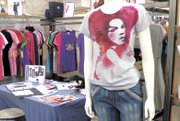Jerry Leigh Makes Communication, Savings Focus of PLM Implementation
As a major licensing, brand management, sales, merchandising and design company, Van Nuys, Calif.–based Jerry Leigh Apparel produces T-shirts and hoodies for kids, men, women and juniors under the Paul Frank Industries, Harajuku Lovers, Disney, Warner Bros. and Coca-Cola labels, among others. But until 2008, the company relied on Excel spreadsheets to manage its art and design, sourcing, production, and quality-control functions, said Vickie Zaura, Jerry Leigh’s director of information services.
With more than 500 employees working from offices in New York; Bentonville, Ark.; Orlando, Fla.; Guatemala; and Shanghai, Jerry Leigh’s internal communication was stunted. “Every division had its own silo of information,” Zaura said. “The result is that we weren’t all on the same page and there wasn’t a single version of the truth. hellip; Even from a management level, there was little visibility.”
Different versions of designs and information floated around, sometimes resulting in costly redundant work and some production mistakes, she said. “We started to look around [for a solution] in 2008, which was a big year for us.”
With the help of consultants, Jerry Leigh explored various Global Sourcing and Product Lifecycle Management (PLM) technology options before settling on Miami Lakes, Fla.–based NGC Software’s e-SPS Web-based system.
At the time, Jeff Silver, Jerry Leigh’s vice president and chief financial officer, said PLM’s ability to facilitate external communication was also key to the decision to implement a system. “When our customers are developing new brand concepts and promotion, we have to be able to turn licensed products very quickly at our manufacturing operations in Asia and Central America,” he said. “We needed a solution to help us streamline production and improve communications with customers and trading partners around the world.”
NGC’s e-SPS system—which allows users to exchange and update information on specific styles, defined events or purchase orders 24/7 via the Internet—went live in early 2009. In 2010, on the strength of its experience with e-SPS, Jerry Leigh added NGC’s e-PLM software to its system, allowing its various design teams to create a single art library, share design ideas and pull inspiration from each other “rather than start from scratch” for every new project or product, Zaura said. “In addition, having visibility to styles when they’re in development will allow for early costing to ensure that we meet our profit goals for each style,” Silver said.
Now, less than three years after implementing its first product and sourcing management system, Jerry Leigh benefits from cost savings resulting from better internal communication among its various design teams, fewer production mistakes and better quality control, Zaura said. Fortune Fashions Industries—the Vernon, Calif.–based maker and distributor of branded, licensed and private label T-shirts acquired by Jerry Leigh in March—will be the next division of Jerry Leigh to be given the PLM treatment.
Zaura has these pointers for apparel makers thinking of making the leap into PLM:
bull; Know your company, its processes and needs so that you can match those to the options offered by the various PLM providers.
bull; If you’re new to PLM, hire consultants to help you navigate your search. “Our consultants looked at our business and looked for the best fit before recommending a couple of solutions,” Zaura said.
bull; Once you have decided on a PLM provider, implement the technology intelligently. “We took a couple of months to get each division trained and up-to-speed. Training is key, especially for companies like us that had been doing everything manually.”
bull; Maximize PLM’s potential for your business by focusing on features that affect your bottom line or streamline your business. At Jerry Leigh, art is a huge part of its business, and using PLM to create a comprehensive, highly searchable database saves designers time and makes the most of a valuable asset.






















